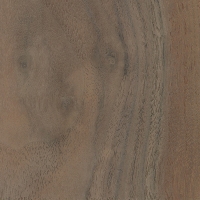 |
Common Name(s): Claro Walnut, California Black Walnut Scientific Name: Juglans hindsii (also J. californica) Distribution: California and Oregon Tree Size: 30-60 ft (9-18 m) tall, 3-5 ft (1-1.5 m) trunk diameter Average Dried Weight: 40 lbs/ft3 (640 kg/m3) Specific Gravity (Basic, 12% MC): .51, .64 Janka Hardness: 1,130 lbf (5,030 N) Modulus of Rupture: No data available* Elastic Modulus: No data available* Crushing Strength: No data available* *Values most likely very similar to Black Walnut Shrinkage: Radial: 4.3%, Tangential: 6.4%, Volumetric: 10.7%, T/R Ratio: 1.5 |
Color/Appearance: Heartwood can range from a lighter pale brown to a dark chocolate brown with darker brown streaks. Color can sometimes have a gray, purple, or reddish cast. Sapwood is nearly white. Wood from orchard trees that have been grafted with English Walnut (Juglans regia) may have a colorful/streaked appearance near the graft, which is sometimes referred to as “marbled Claro Walnut.” Claro Walnut can occasionally also be found with figured grain patterns such as: curly, crotch, and burl.
Grain/Texture: Grain is usually straight, but can be irregular. Has a medium texture and moderate natural luster.
Endgrain: Semi-ring-porous; large earlywood pores grading to medium latewood pores, few; solitary and radial multiples of 2-3; tyloses occasionally to abundantly present; growth rings distinct; medium rays barely visible without lens, normal spacing; parenchyma diffuse-in-aggregates (sometimes very faint and barely visible even with lens) and banded (marginal).
Rot Resistance: Claro Walnut is rated as very durable in terms of decay resistance, though it is susceptible to insect attack.
Workability: Typically easy to work provided the grain is straight and regular. Planer tearout can sometimes be a problem when surfacing pieces with irregular or figured grain. Glues, stains, and finishes well, (though walnut is rarely stained).
Odor: Claro Walnut has a faint, mild odor when being worked.
Allergies/Toxicity: Other species in the Juglans genus (such as Black, and English Walnut) have been reported as sensitizers, and Claro Walnut is likely to generate similar allergic reactions. Usually most common reactions simply include eye and skin irritation. See the articles Wood Allergies and Toxicity and Wood Dust Safety for more information.
Pricing/Availability: Plain, unfigured Claro Walnut is usually just slightly more expensive than Black Walnut, though curly, marbled, or burl figured wood is likely to be very expensive, and is highly sought after for gunstock and turning blanks.
Sustainability: This wood species is not listed in the CITES Appendices, but is on the IUCN Red List. It is listed as vulnerable due to a population reduction of over 20% in the past three generations, caused by a decline in its natural range. Although Claro Walnut is widely grown on orchards, its natural range has been diminished and fragmented.
Common Uses: Furniture, cabinetry, gunstocks, musical instruments, veneer, turned items, and other small wooden objects and novelties.
Comments: Claro Walnut is a commercially important tree species that’s used as rootstock on walnut orchards. The robust roots of Juglans hindsii are well-suited to the California climate, and are combined with grafts of English Walnut (Juglans regia) to produce a higher yield of walnuts. Another closely related species, Juglans californica, has a distribution that is farther south than Claro Walnut, and is sometimes referred to as Southern California Black Walnut; some sources consider these two to be the same species with simply two varieties.
Scans/Pictures: A special thanks to Ken Forden for providing the wood sample of this wood species.
 |
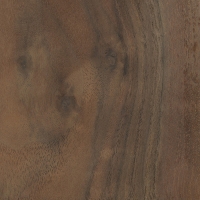 |
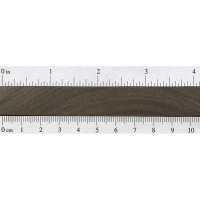 |
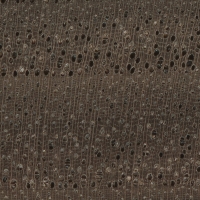 |
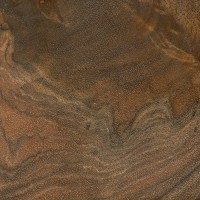 |





I just cut a claro walnut today, didn’t know what it was but when I seen the cookie I decided to take it home to mill it. It’s native to Oregon and so am I. I was in aware that we had this tree here
Have you ever heard the term “Silver Walnut”.? A relative says they have a table made from silver walnut and want to get it refinished. I can find no information about that type of wood. Could this be a common name for Claro Walnut?
To Ronald A. Peyton, My dad was born in 1933. In 1947 he started working and skidding logs with a mule “in the log woods” as he put it when he was 14 years old. By the time he was 17 he was the head sawyer and was operating a 72 inch portable Bell Saw that him and the crew would move from place to place and set up in the log woods along with there shanty’s and they would live and work right there in the woods and in their spare time they would try to drink every little… Read more »
I love your story! You are right
on the money- I build guitars, and Claro has become my favorite wood! Thanks!
Thomas Brown
I think you’re by far the best person to answer that questions, you probably saw more board feet than most people would see in ten lifetimes.
I think this might be what I have as I am actually in California and had put it in possibly the walnut family…?
Is this the same variety as “Western Black Walnut”?
No, That’s Juglands Nigra. Claro is a separate species and native to California.
Is Claro Walnut native to North Dakota?
Nowhere close. California.
There are many transplant Claro walnut trees in many places, it grows well in most conditions and are planted in most states now.
Apparently some Claro Walnut also grows in Oregon, but the Dakotas? No way.